Related Research Articles

Roberto Mario Gómez Bolaños, more commonly known by his stage name Chespirito, or "Little Shakespeare", was a Mexican actor, comedian, screenwriter, humorist, director, producer, and author. He is widely regarded as one of the icons of Spanish-speaking humor and entertainment and one of the greatest comedians of all time. He is also one of the most loved and respected comedians in Latin America. He is mostly known by his acting role Chavo from the sitcom El Chavo del Ocho.

Charro has several meanings, but it generally refers to Mexican horse riders, who maintain traditional dress, such as some form of sombrero, which in Mexican Spanish are called sombrero de charro. The charros could also be thought of as old Mexican cowboys who dress like such, although more modern dress is now seen on those who still work the ranches (rancheros). See also, vaquero.

Mexicans are the citizens and nationals of the United Mexican States.

Nuestra Señora de la Santa Muerte, often shortened to Santa Muerte, is a cult image, female deity, and folk saint in folk Catholicism and Mexican Neopaganism. A personification of death, she is associated with healing, protection, and safe delivery to the afterlife by her devotees. Despite condemnation by leaders of the Catholic Church, and more recently evangelical movements, her cult has become increasingly prominent since the turn of the 21st century.

Casta is a term which means "lineage" in Spanish and Portuguese and has historically been used as a racial and social identifier. In the context of the Spanish Empire in the Americas, the term also refers to a 20th-century theoretical framework which postulated that colonial society operated under a hierarchical race-based "caste system". From the outset, colonial Spanish America resulted in widespread intermarriage: unions of Spaniards, Amerindians, and Africans. Basic mixed-race categories that appeared in official colonial documentation were mestizo, generally offspring of a Spaniard and an Indigenous person; and mulatto, offspring of a Spaniard and an African. A plethora of terms were used for people with mixed Spanish, Amerindian, and African ancestry in 18th-century casta paintings, but they are not known to have been widely used officially or unofficially in the Spanish Empire.
A narcocorrido is a subgenre of the Regional Mexican corrido genre, from which several other genres have evolved. This type of music is heard and produced on both sides of the Mexico–US border. It uses a danceable, polka, waltz or mazurka rhythmic base.

Mexican Spanish is the variety of dialects and sociolects of the Spanish language spoken in the United Mexican States. Mexico has the largest number of Spanish speakers, with more than twice as many as in any other country in the world. Spanish is spoken by just over 99.2% of the population, being the mother tongue of 93.8% and the second language of 5.4%.
The Totonacan languages are a family of closely related languages spoken by approximately 290,000 Totonac and Tepehua people in the states of Veracruz, Puebla, and Hidalgo in Mexico. At the time of the Spanish conquest Totonacan languages were spoken all along the gulf coast of Mexico. During the colonial period, Totonacan languages were occasionally written and at least one grammar was produced. In the 20th century the number of speakers of most varieties have dwindled as indigenous identity increasingly became stigmatized encouraging speakers to adopt Spanish as their main language.

Indigenous peoples of Mexico, Native Mexicans or Mexican Native Americans, are those who are part of communities that trace their roots back to populations and communities that existed in what is now Mexico before the arrival of Europeans.
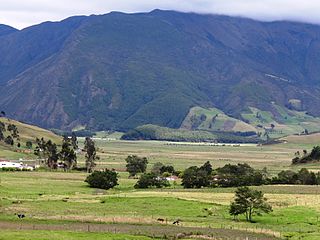
The Altiplano Cundiboyacense is a high plateau located in the Eastern Cordillera of the Colombian Andes covering parts of the departments of Cundinamarca and Boyacá. The altiplano corresponds to the ancient territory of the Muisca. The Altiplano Cundiboyacense comprises three distinctive flat regions; the Bogotá savanna, the valleys of Ubaté and Chiquinquirá, and the valleys of Duitama and Sogamoso. The average altitude of the altiplano is about 2,600 metres (8,500 ft) above sea level but ranges from roughly 2,500 metres (8,200 ft) to 4,000 metres (13,000 ft).

José Yves Limantour Marquet was a Mexican financier who served as Secretary of the Finance of Mexico from 1893 until the fall of the Porfirio Díaz regime in 1911. Limantour established the gold standard in Mexico, suspending free coinage of silver, and mandating only government coins be used. He secured the national debt in 1899 with a consortium of foreign banks, and at the time of the outbreak of the Revolution, Mexico was on strong financial basis. Before the Mexican Revolution he was widely seen, along with General Bernardo Reyes, as one of the stronger candidates to succeed President Díaz.
Chichimeca or Chichimeca Jonaz is an indigenous language of Mexico spoken by around 200 Chichimeca Jonaz people in Misión de Chichimecas near San Luis de la Paz in the state of Guanajuato. The Chichimeca Jonaz language belongs to the Oto-Pamean branch of the Oto-Manguean language family. The Chichimecos self identify as úza and call their language eza'r.
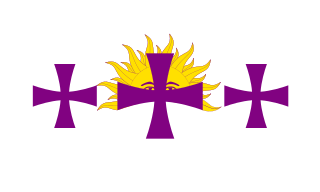
Hispanidad is a Spanish term alluding to the group of people, countries, and communities that share the Spanish language and Hispanic culture. The term can have various, different implications and meanings depending on country of origin, socio-political views, and cultural background.
White Latin Americans, or European Latin Americans, are Latin Americans who are considered white, typically due to European descent. Latin American countries have often tolerated interethnic marriage since the beginning of the colonial period.
Gastón Guzmán Huerta, a Mexican mycologist and anthropologist, was an authority on the genus Psilocybe.
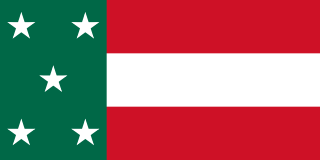
The Republic of Yucatán was a sovereign state during two periods of the nineteenth century. The first Republic of Yucatán, founded May 29, 1823, willingly joined the Mexican federation as the Federated Republic of Yucatán on December 23, 1823, less than seven months later. The second Republic of Yucatán began in 1841, with its declaration of independence from the Centralist Republic of Mexico. It remained independent for seven years, after which it rejoined the United Mexican States. The area of the former republic includes the modern Mexican states of Yucatán, Campeche and Quintana Roo. The Republic of Yucatán usually refers to the Second Republic (1841–1848).
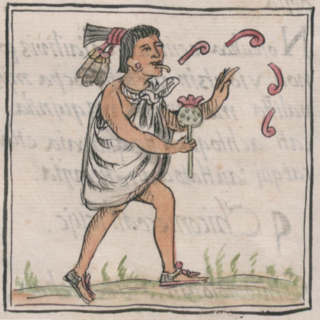
Nahuatl, Aztec, or Mexicano is a language or, by some definitions, a group of languages of the Uto-Aztecan language family. Varieties of Nahuatl are spoken by about 1.7 million Nahua peoples, most of whom live mainly in Central Mexico and have smaller populations in the United States.
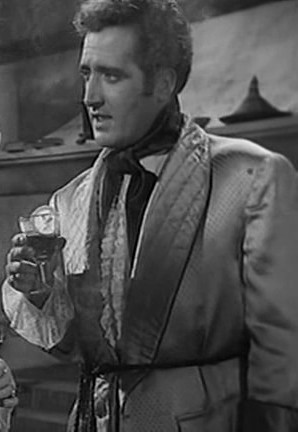
Abel Salazar García was a Mexican actor, producer and director. He appeared in 70 films between 1941 and 1989. He was a son of Don García and his wife, and brother to Don Alfredo Salazar.

Marta Lamas Encabo is a Mexican anthropologist and political science professor at the National Autonomous University of Mexico (UNAM), and lecturer at the Instituto Tecnológico Autónomo de México (ITAM). She is one of Mexico's leading feminists and has written many books aimed at reducing discrimination by opening public discourse on feminism, gender, prostitution and abortion. Since 1990, Lamas has edited one of Latin America's most important feminist journals, Debate Feminista. In 2005, she was nominated for a Nobel Peace Prize.
The Mexicaneros are an indigenous people of Durango and Nayarit, Mexico. They are one of the 62 original cultures of Mexico. They speak the Mexicanero language, one of the Nahuatl dialects. Some 1,300 individuals spoke the Mexicanero language as of 2011. They live in Mezquital Municipality, Durango and Acaponeta and El Nayar municipalities in Nayarit.
References
- ↑ Gama-Castro, Jorge; et al. (2007). "Los tepetates y su dinámica sobre la degradación y el riesgo ambiental: el caso del Glacis de Buenavista, Morelos". Boletín de la Sociedad Geológica Mexicana (in Spanish). 59 (1): 133–145. doi: 10.18268/BSGM2007v59n1a11 .
- Williams, Barbara J. (1972). "Tepetate in the Valley of Mexico". Annals of the Association of American Geographers. 62 (4): 618–626. doi:10.1111/j.1467-8306.1972.tb00890.x.